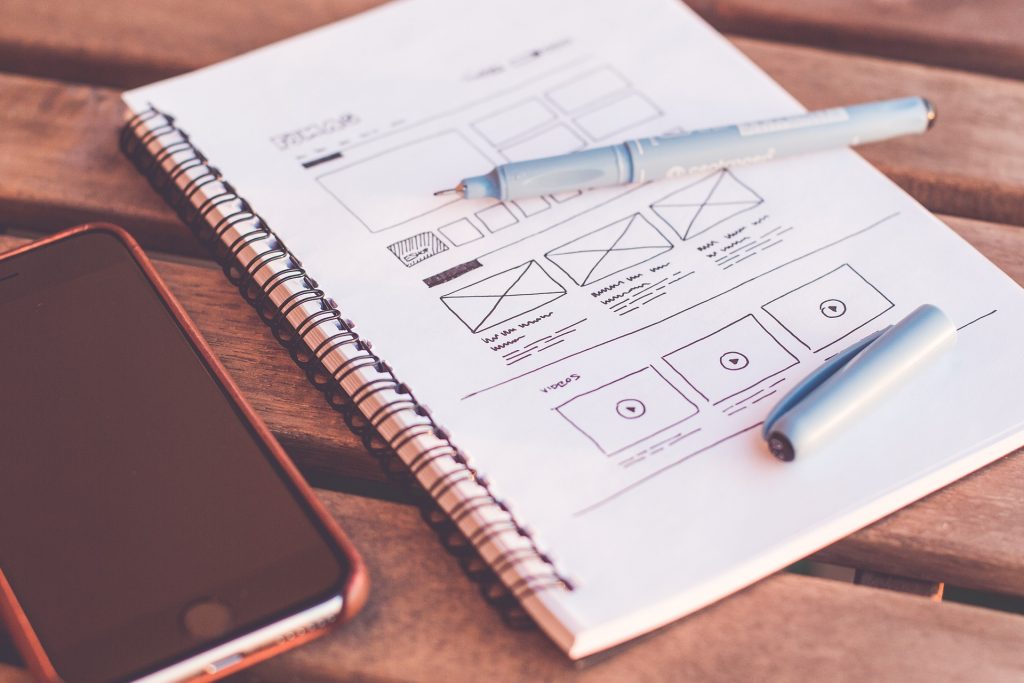
Your website checklist: 10 critical elements and copy tips
Revamping your website? Make sure it follow’s today’s website design best practices and drives conversions by incorporating the right design elements.
I’m going to cover what I think are the ten most important elements for any site design or refresh project.
10 critical elements for a successful website
- Consistent navigation: Your site’s navigation tells a user how to get around your site and where to go. Whether you use a top bar or a hamburger menu, your navigation should be consistent on each page of your site. Most web designs also use your logo as a homepage, so no need to include a home line in your navigation anymore.
- Contact info: Your brand name and contact info must be on your site! Today’s site standards tend to put your company information like address, phone number, and email in your site’s footer and on a dedicated contact us page.
- Images and videos: We process images 6,000 times faster than words and let’s have the images on your site not be worth a thousand words, but a thousand bookings. Use high-quality images or videos to sell the experience and use your words to assist your site’s Search Engine Optimization or SEO.
- Clean design: It can be tempting to have tons of photos and information on your site, but it can also be overwhelming to customers and cause analysis paralysis. Having white space on your site breaks up your visuals and text blocks and makes it easier for your website visitor to understand where they should go next.
- CTAs: Tell your website visitors what to do and where to go! Use Call to Action (CTA) buttons like “Book Now” or “Learn More” to encourage visitors to make their way through the site and book the right activity.
- Headers: Headers are great spots for your site’s keywords and to call attention to certain blocks of text, like testimonials or the most popular activities.
- Social proof: Include testimonials on your site, preferably on the homepage, to help sell the experience, improve your online reputation, and gain your website visitor’s trust. Many consumers only need to read a handful of reviews before they decide if they trust a brand and are going to make a purchase. Make it easy on those customers and include reviews on your own site!
- SEO-friendly URL structure: We’ll dive into SEO more in-depth later on in the course, but as you build out your website you’ll want to make sure your URL structure is both human-friendly and SEO-friendly. For example, instead of brand.com/page/tour2 which doesn’t help anyone know what the URL is about, have a structure like: brand.com/tours/vegas-food-tour.
- SEO elements: You also want to ensure you have SEO elements on each page of your website, like page title, meta descriptions, and keywords to get your site to rank.
- SSL certificate: Finally, having an SSL certificate (Secure Sockets Layer) means that your site is securing the data that passes from browser to web server. Simply look for that little green lock in your address bar or an ‘s’ at the end of your https:// prefix to see if a site is secure. SSL is a part of your site’s ranking and helps customers feel comfortable putting credit card information in online.
By using these elements in your site design, you’ll be at a good place with a site that’s built around the user experience and designed to drive online conversions.

Website content
As you build out your site’s design there are some best practices for your site’s copy:
- Scannable content: Keep paragraphs short to make your site’s content easier to scan and read. Need a faster way to make your copy scannable? Use bullet points!
- Inverted pyramid: Back to Journalism 101! The inverted pyramid means your most important information is at the top of the content and then less important information filling out the rest of the page. Your customers should be able to read just the first paragraph and know enough about the tour or activity to be confident making their booking.
- Paint a picture: Describe the full experience of your tour or activity. Make it easy for them to get excited about booking it.
- Readability: Keep the reading level low, meaning it’s easy to read, easy to understand, to the point, and avoids technical jargon.
- Be credible: Keep your copy free of spelling and grammar errors! Double check your copy or run it through a tool, like Grammarly, to find any sneaky errors that may be on the page.
- Inject personality: Going back to brand storytelling, it’s important to be authentic in how your brand is presented online and make it easy for customers to fall in love with your brand by showcasing your personality.
- Be informal: Talk directly to the reader by using second-person point of view! There’s no reason to be so formal and talk about how “our customers will experience an unforgettable San Francisco walking tour.” Put the reader in the action by saying, “you experience an unforgettable San Francisco walking tour.”
When it comes to your web design, there are some standards that stand the test of time, but other best practices are always adapting to today’s technology and customers. Make sure to revisit your site design at least once a year to make sure it’s following current best practices.




